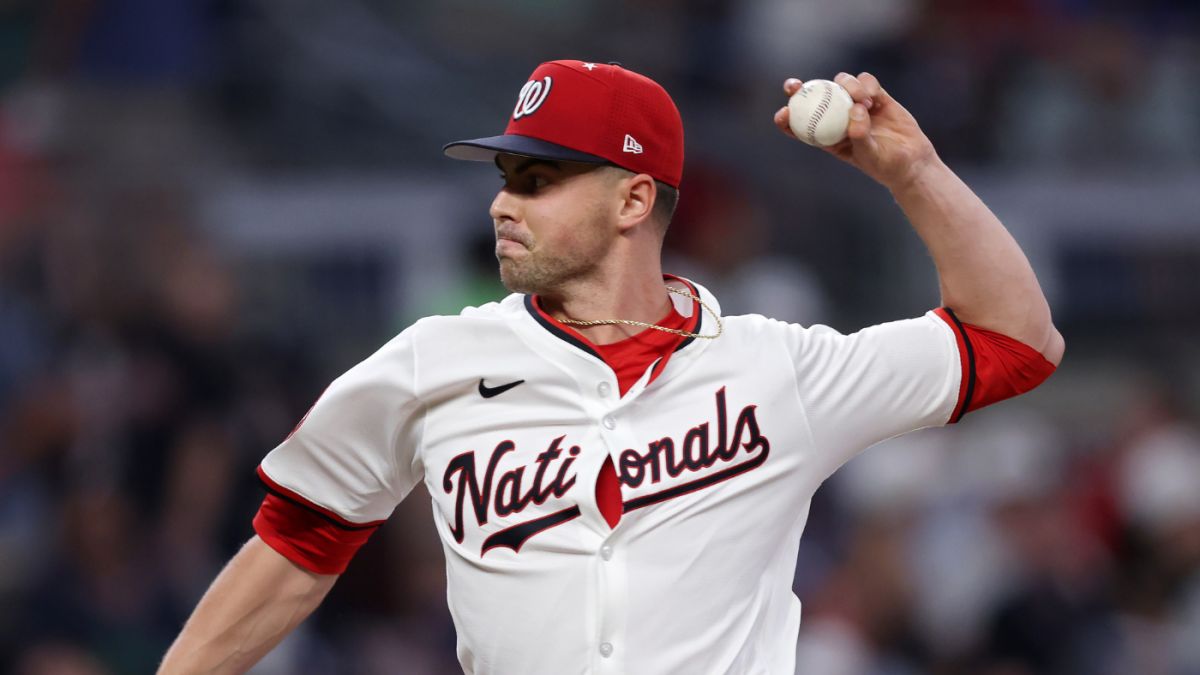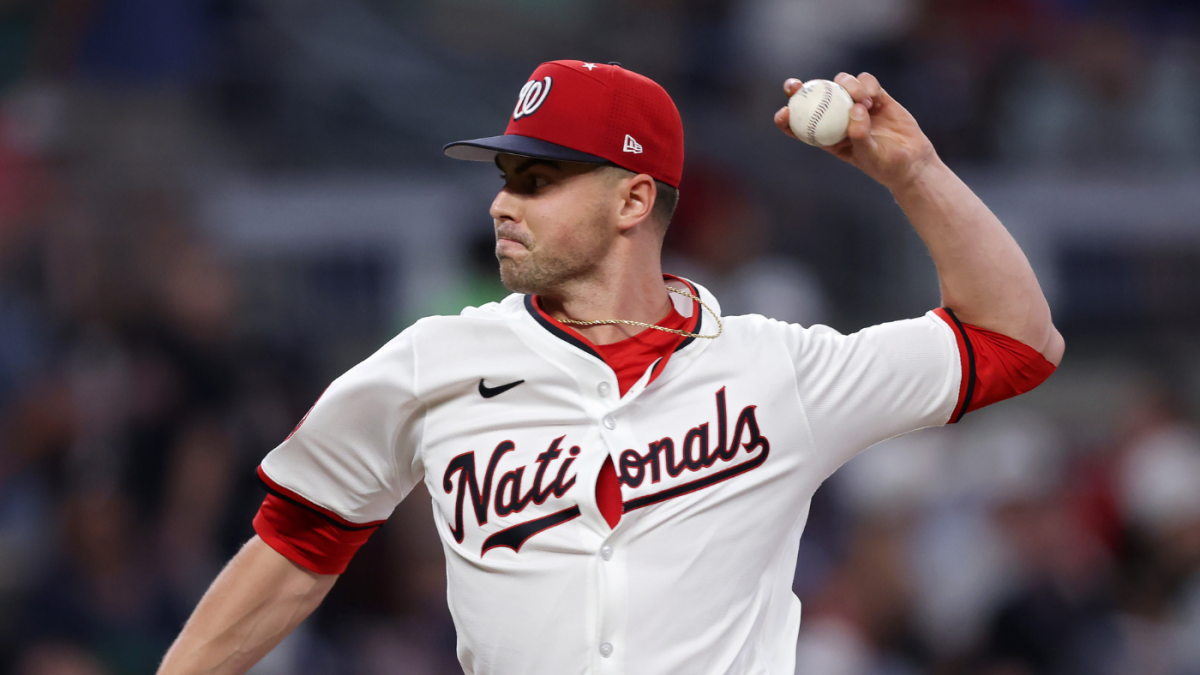The MacKenzie Gore Conundrum: Navigating the Nationals’ Trade Deadline Dilemma
Introduction
The Washington Nationals stand at a pivotal juncture as the 2025 MLB trade deadline approaches. The team’s unexpected competitiveness this season has thrown a wrench into their long-term rebuilding plans, creating a complex dilemma centered around MacKenzie Gore. The left-handed pitcher has blossomed into a potential All-Star and a highly coveted trade asset. The Nationals’ front office must decide whether to capitalize on Gore’s value now or build around him as a cornerstone of their future. This report delves into the arguments for and against trading Gore, examining the potential returns, the team’s long-term outlook, and the risks associated with both paths.
Gore’s Ascent: A Jewel in the Nationals’ Crown
MacKenzie Gore’s journey to prominence is a testament to his resilience and talent. Once a top prospect with the San Diego Padres, Gore arrived in Washington as part of the blockbuster trade that sent Juan Soto to the West Coast. After overcoming early career struggles, Gore has flourished into a legitimate ace for the Nationals. His impressive performance in 2025, characterized by a combination of velocity, command, and poise, has solidified his status as one of the team’s most valuable assets.
Gore’s emergence provides the Nationals with a rare commodity: a young, controllable starting pitcher with frontline potential. He represents a tangible piece of the puzzle as the team attempts to construct a winning roster. His presence not only anchors the pitching staff but also provides a beacon of hope for fans eager to see the Nationals return to contention.
The Case for a Trade: Maximizing Return and Accelerating the Rebuild
Despite Gore’s value to the team, the Nationals must seriously consider the potential benefits of trading him. Several factors contribute to this perspective:
Peak Value
Gore’s current performance likely represents the highest his trade value will ever be. He is young, healthy, and performing at an All-Star level. Teams in contention are often willing to overpay for such a player, particularly at the trade deadline. Capitalizing on this peak value could yield a significant return for the Nationals.
Addressing Multiple Needs
Trading Gore could yield a significant package of prospects, potentially filling multiple holes in the Nationals’ roster. The team needs to improve its offense, particularly in the outfield and at second base. A trade involving Gore could bring in several high-ceiling players who can contribute to the team’s future success.
Risk Mitigation
Pitchers are inherently volatile assets. Injuries are common, and performance can fluctuate wildly. Holding onto Gore carries the risk that his value could decrease due to injury or regression. Trading him now allows the Nationals to capitalize on his current value and avoid these potential pitfalls.
Rebuild Timeline
The Nationals are still in the early stages of their rebuild. While Gore is a valuable piece, he may not align with the team’s long-term timeline. The Nationals could potentially acquire prospects who are closer to the major leagues or who possess higher upside.
The Case Against a Trade: Building a Foundation for the Future
Trading MacKenzie Gore would be a significant decision with potentially far-reaching consequences. There are compelling arguments for keeping him in Washington:
Proven Talent
Unlike prospects, Gore is a proven commodity at the major league level. He has demonstrated the ability to pitch effectively against MLB hitters. His value is not based on potential but on actual performance.
Leadership and Stability
Gore provides leadership and stability to the Nationals’ pitching staff. He sets an example for younger pitchers and helps to create a winning culture. His presence in the clubhouse is invaluable.
Fan Appeal
Gore has quickly become a fan favorite in Washington. His talent and personality resonate with the fan base. Trading him would likely alienate some fans and could negatively impact attendance and team morale.
Controllability
Gore has team control for several more seasons, providing the Nationals with cost certainty and flexibility. They can build around him without having to worry about his impending free agency.
Potential Trade Partners and Return Scenarios
Several teams have reportedly expressed interest in acquiring MacKenzie Gore. The Boston Red Sox, in particular, are seen as a strong suitor. The Red Sox are in playoff contention and are looking to bolster their starting rotation. They have a deep farm system and could offer a package of prospects that would be attractive to the Nationals.
Other potential trade partners include teams like the Yankees, looking to add starting pitching depth for a playoff push, and perhaps even a surprise contender willing to mortgage some of their future for a shot at a title run.
The Nationals should prioritize acquiring prospects who address their specific needs. This includes players with high offensive potential, particularly those who can play in the outfield or at second base. They should also look for pitchers who are close to the major leagues and who have a high ceiling.
Weighing the Risks: A Delicate Balancing Act
The decision of whether to trade MacKenzie Gore is not an easy one. It requires a careful weighing of the risks and rewards. The Nationals must consider the potential returns, the team’s long-term outlook, and the impact on the fan base.
Trading Gore could accelerate the rebuild and provide the Nationals with a wealth of young talent. However, it also carries the risk of trading away a potential ace and alienating the fan base.
Keeping Gore would provide stability and leadership to the pitching staff. However, it also carries the risk that his value could decrease, and the Nationals may miss out on an opportunity to acquire valuable assets.
A Calculated Gamble
Ultimately, the Nationals’ decision will depend on their assessment of Gore’s long-term potential and the quality of the offers they receive. If they believe that Gore is a true ace who can lead them to contention, they should keep him. However, if they are offered a package of prospects that they believe can significantly accelerate the rebuild, they should seriously consider a trade.
The Nationals must also consider the impact on the fan base. Trading Gore would be a difficult decision to explain to fans, but it could be justified if the team is able to acquire a group of exciting young players.
Conclusion: A Defining Moment for the Nationals
The MacKenzie Gore trade dilemma represents a defining moment for the Washington Nationals. The decision they make will shape the future of the franchise for years to come. There is no easy answer, and both options carry significant risks and rewards. The Nationals must carefully weigh all the factors and make a decision that is in the best long-term interest of the team. Whether they choose to build around Gore or trade him for a package of prospects, the Nationals’ front office must act decisively and strategically to ensure that the team is well-positioned for future success.












